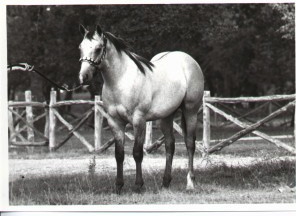[QUOTE=Wirt;8058484]
Bull hockey.
https://fbcdn-sphotos-e-a.akamaihd.net/hphotos-ak-xfa1/v/t1.0-9/1779805_744286782320511_7022189206739919701_n.jpg?oh=8742e2667534f61e0ef109886c263172&oe=55B80D67&gda=1437689911_82a99d4a3749f8afff74fc57c6887fe1
This horse is not hollow or uneck. That is where a bridle horse neck and head should be. And that is a horse that could probably do a lot of other things as well.[/QUOTE]
[QUOTE=Plumcreek;8058915]Now this is wrong.
I showed WP in Calif from 1966 to 1972, at the QH shows (mostly Diamond Bar) and the big open shows at Santa Barbara, before moving to Colorado. We kept the horses between the bit and our legs, pushed them up into the bit, nose out slightly, eye ~ level with the withers, and then backed off the bit to some slack in the rein. Put legs on and rocked the bit in their mouth with my little finger when they lost self carriage (didn’t call it that back then) and a fix was needed. They felt like Silk, and actually Cynthia Cantleberry and Silk Sails were the ones I tried to emulate. I started out as a Dressage Kid, and the WP of that era did not conflict with what I had been taught. Don’t mess with the old California pleasure horses.[/QUOTE]
Look, no matter what we do, in general, everyone you can talk to that was around and into horses half a century ago as a professional will tell you the knowledge and general way horses were trained and competed with was by far not what it is today.
In general, today’s horse world is considerably better all around, warts and all of extremes out there.
You can’t even start to compare what passed as dressage or any western riding decades ago with what we have today.
That is as it should be, the information age brings us that.
We know more and more and that information is out there for all to access, unlike before, when it was more regional, especially in the horse world.
I am pointing out that we really can’t compare what we know today, the horses and training and concepts guiding those today, with what I saw then in the horse world of that time and what those that were competing in the West then told me.
That is just my opinion, with what I know.

